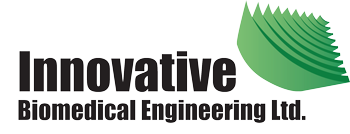Care, maintenance and safe use of x-ray machines is critical in chiropractic practices to ensure patient safety and prevent harmful exposure levels for radiation workers. Following are questions we receive when surveying chiropractic offices:
How do I get dosimeter badges?
Access the BCCDC website for a list of suppliers or phone 1-800-261-6689 or download a current version of the BCCDC’s RIN07 report.
Where do I wear my dosimeter badge?
In British Columbia, you wear it under your lead protection device such that it is between the lead and on the central core of your body. On your belt or on a shirt pocket are two common locations that work. Some individuals desire to determine the radiation exposure in the area of the thyroid in addition to the whole body. If that is the case, the best location for the second badge is on the collar of a shirt or uniform, again under the lead. There are those who wear their badges outside the lead because they want some indication of the radiation that emanates from the system and the patient. The problem with this is that it skews the statistics which result from the combined analysis of worker radiation exposure which is reviewed on a regular basis. Those who analyze the data do not know where the badge was worn. If worn outside the apron, it will record a higher value than if worn under the apron, and the value of the obtained dose is determined to be actual body exposure, which will be incorrect and falsely high.
How to prepare for an X-ray inspection of facility?
The inspection covers a number of steps dealing with the actual performance of the X-ray machines, processing of images, radiation safety, personal protection equipment and Quality Assurance Programs. The best way to prepare for the inspection is to insure that technique charts are posted ,lead aprons, gloves, thyroid shields etc. are in good repair and that a QA program is in place. In addition, exposure records and staff radiation records must be current and visible, the rest of the inspection is technical and there is little that can be done ahead of the inspection. It is a good idea to have on hand a person familiar with the operation of the various systems while the surveyor is on site. Some practices take the step of having their equipment serviced prior to a survey. This is often not necessary as the surveyor may be able to remedy minor problems and most surveyors only check the machines as they are used. Hence, a partially functioning machine can pass a survey if it performs within the limits of Safety Code 20-A.
Should I check Cassettes and Screens against the film that I use?
Yes. It is an observed fact that chiropractic practices often use screens and cassettes that are cast off from hospitals. Hospitals today are adopting various forms of digital imaging with the result that film cassettes and screens are no longer used and this bonanza has fallen on many chiropractic practices. There is some risk associated with accepting these. The screens may not match the film type used in the practice as to color or speed and the cassettes may have light leaks. Further, exposure techniques are highly dependent on film screen combinations and if several such combinations result from the mixing of screens, cassettes, and film from various sources, exposure factors will result in undesirable images. You are advised to check with a reputable supplier of these products before you institute their use in your practice.
Is digital imaging worth exploring?
Yes. If your practice does a lot of radiography digital imaging is a good investment. The cost is high but the returns are such that you end up providing better radiographic services at many levels. However, the cost benefit ratio has to be seriously examined in relation to the alternatives provided by the more traditional, and field proven film based images.
Is patient dose decreased with digital imaging?
Yes. Provided that your imaging system is properly calibrated and your X-ray machine is in good working order, in most cases, patient dose per exam will be reduced.
